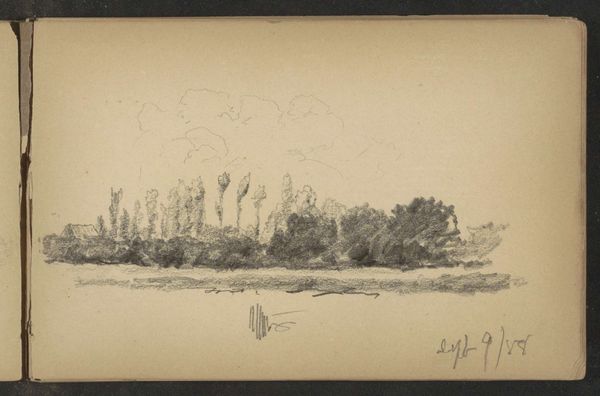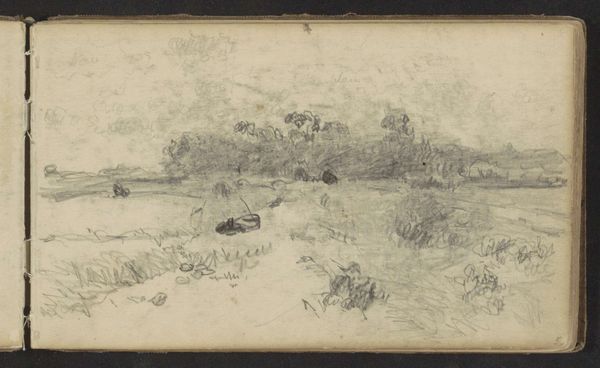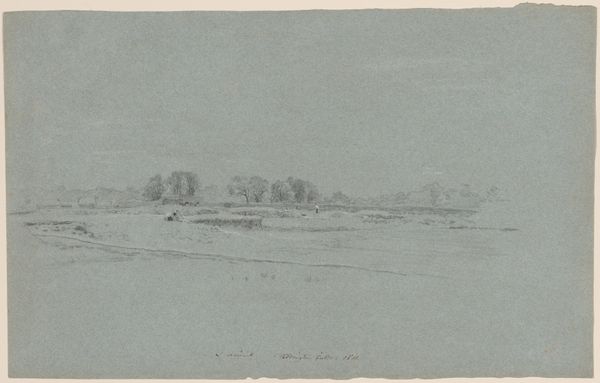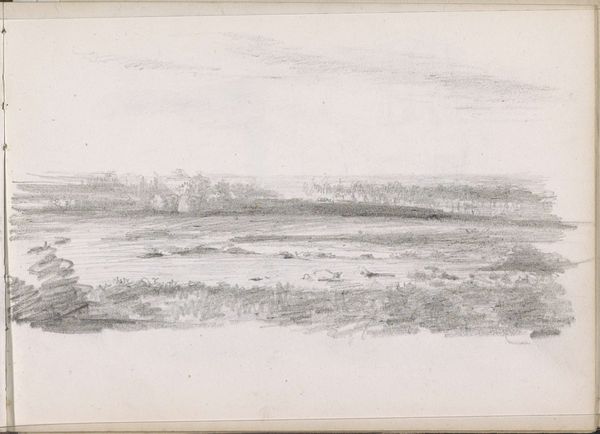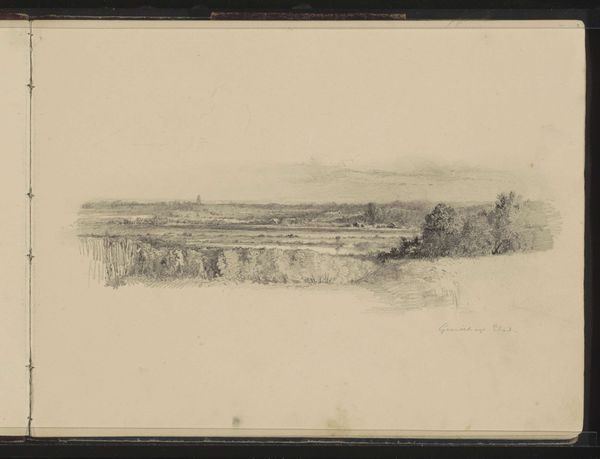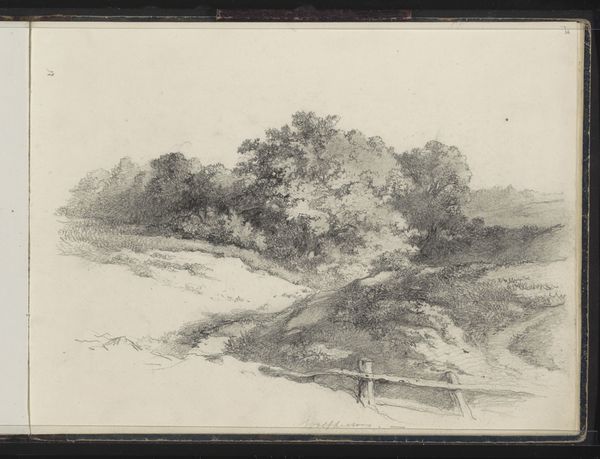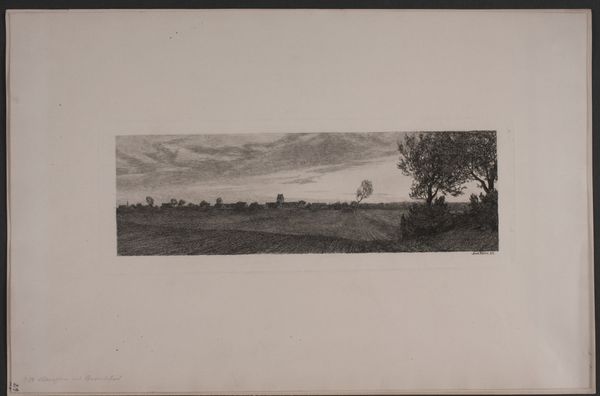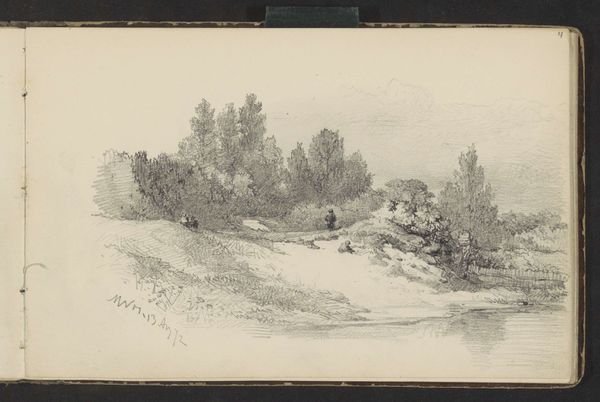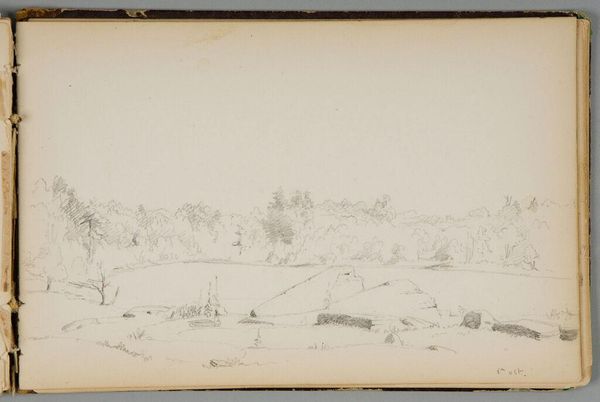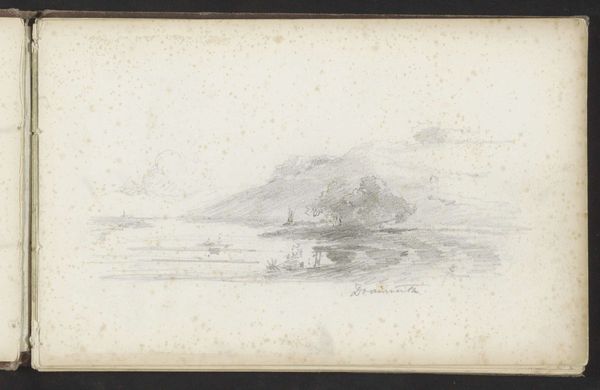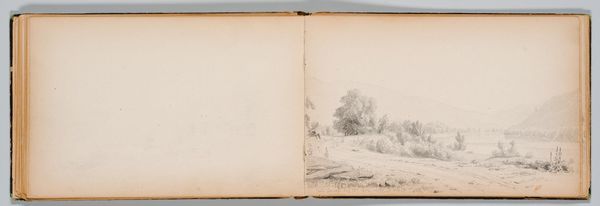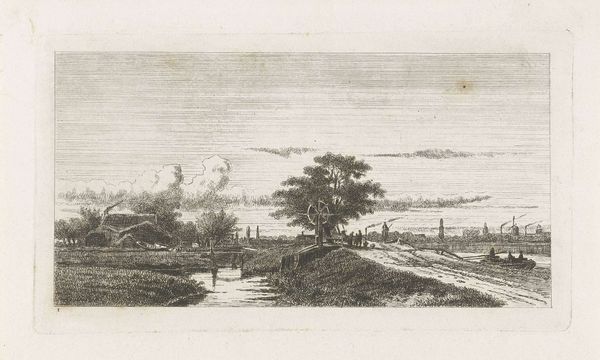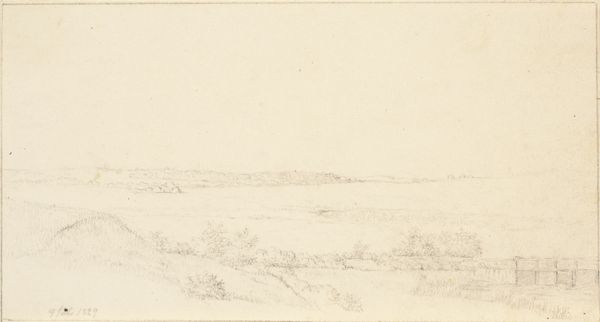
Copyright: Rijks Museum: Open Domain
Curator: Welcome. Before us, we have Maria Vos’s "River Landscape with a House with a Smoking Chimney," a pencil drawing dating roughly from 1856 to 1870. It’s currently held in the Rijksmuseum’s collection. Editor: My initial impression is one of serene simplicity. The light touch of the pencil creates an almost dreamlike atmosphere. There’s a striking sense of depth conveyed through subtle shifts in tone and texture. Curator: Absolutely. Consider how landscape art was developing during the mid-19th century. There's a growing appreciation for natural scenery alongside ongoing industrial advancements that influenced this style. Editor: Yes, and notice the almost feathery quality of the pencil work. It’s particularly evident in the depiction of the trees and the grassy foreground. The lines direct the eye toward the focal point of the composition – the house. Curator: Which provides interesting insight into societal concerns during that period. The imagery of a smoking chimney suggests notions of home and industry, and perhaps a yearning to depict them in idyllic form. This reflects contemporary discussions around agrarian romanticism and progress. Editor: Precisely. The composition is deceptively simple, isn't it? A winding path invites the viewer into the landscape. Also, I find that subtle interplay of light and shadow evokes a sense of nostalgia. Curator: True, and beyond visual impressions, Vos's rendering prompts questions about representation in Dutch art at the time, along with the museum's own history as gatekeeper and authority on deciding whose stories and works receive validation. Editor: I see your point. Considering those dynamics is important to one’s reception of this work, regardless of how we perceive that structure aesthetically. It strikes me that there is an undeniable tenderness in the observation of nature—regardless of political motivations—conveyed by those graphite strokes. Curator: Well, I appreciate the sensitivity to Vos' technique alongside larger considerations of the social context, I trust visitors will carry some new lenses when reflecting on landscape. Editor: As do I. Hopefully, it has opened up this quiet piece for broader engagement, which transcends technique or material choices, in surprising new ways.
Comments
No comments
Be the first to comment and join the conversation on the ultimate creative platform.

